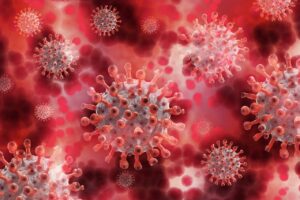A disease is a specific pathological state that impacts quality. It is of all or part of an individual without being caused by outside harm. Health illnesses having distinct indications and effects are to as ailments. It is an unstable situation in which the brain or soul suffers. Disorders can lead to pain, malfunctioning internal organs, and even demise. One of the common diseases is CVID. CVID symptoms are sometimes dangerous.
What is Cvid?
CVID is an immune response condition due to a genetic mutation. Antibody (peptides that help fight infection) blood levels are low in individuals with this illness. People may encounter repeated infections if their cells do not produce any of these antigens. Disorders in the circulatory tract, sinuses, and noses are common in patients with CVID. This disease can raise your risk of developing cancer and intestinal disorders. CVID is a kind of source of infection. These are hereditary disorders in which an immune system of the body fails to function normally.
Diagnosis of Cvid:
There are presently no defined guidelines for the identification of CVID, and medical understanding is limited. Due to the poor knowledge among clinicians, diagnosis is challenging, and the syndrome has been to resemble other immunological diseases. CVID is an exclusive diagnostic, which requires an additional test to verify the prognosis. Ordinarily, with low immunoglobulin in cases, simultaneous Antibody deficiency is a defining feature of CVID. Patients with CVID also had a reaction to vaccines, particularly protein and peptide immunizations. There is a higher risk of immunological leukocytosis, lung damage, hepatomegaly, and other medical conditions. CVID sufferers do not have completely functional antibodies, leading to an increased risk of illness. Before a definite confirmation of CVID can be made circumstances be ruled out for decreased immunoglobins levels. All individuals with significant T-cell deficiencies should be out. Before it and a red blood cell count with a difference would be beneficial. It is because CVID is to platelets problems include granulocytopenia, determination, tiny cells, and neutropenia.
Cause of Cvid:
CVID is by a range of genetic disorders that induce a deficiency in immunological cells. It is the capacity to produce adequate amounts of all types of autoantibodies. Only a few have been of those flaws detected. The origin of CVID in the cases remains uncertain because many persons with CVID have a variant in the TACI chromosome, a type of DNA variability. However, this genetic abnormality increases the risk of CVID, and it does not cause CVID on its own. CVID has also been with Impaired immunity, a disorder where only antibodies immunoglobulin A (IgA) is deficient, while other antibodies types are healthy or nearly average. Immunoglobulin deficiency usually occurs on its own. However, it can also occur before the onset of CVID or in relatives of CVID sufferers.
Treatment of Cvid:
Immunoglobulin replacement therapy (IRT) is to cure CVID, which usually reduces effects. Internal consistency reliability therapies must be on schedule and for the rest of one’s life. Many infections that can be CVID are with medications. Individuals may require treatment for a prolonged period of time than a fit individual. Prevention of viral diseases induced by immunological problems includes antiretroviral. Some of them are phenelzine and herpes, as well as a substance called interferon. Both DNA and viral vaccinations appear to be safe for CVID patients, while their effectiveness in this group is uncertain.
Sign and symptoms of Cvid:
CVID symptoms are abnormally low amounts of the immunoglobulin that defend us against diseases. As a result, people with this condition are more prone to become unwell. They are more likely to be serious. Repeated viral or bacterial infections are a common sign of this condition. According to studies, over 90percent of persons with CVID are more vulnerable to infections of the larynx, lungs, airways, or intestinal system, making this the virus’s most common symptom. Signs vary based on the sort of illness a person is dealing with. When a person has one or more ongoing, then the problems may lessen at periods of time. It is included during the recovery phase or intensified. Some of the symptoms are that are in it are the following:
- Coughing for a long time
- Coughing up mucus that is yellow, green, or brown in color.
- a stuffy nose
- Swollen Lymph vessels or ducts.
- Other breathing problems, such as coughing
- Flu
- Auditory ache
- Hepatitis
- Malnutrition
- Vomiting or discomfort
- Inadequacies in key nutrients
Some Rare symptoms:
Joint symptoms:
About 1%–10percent of the total of persons with common variable insufficiency will develop signs that resemble rheumatic disease at first look. Joint inflammation, rigidity, discomfort, and deformities are all possible signs.
Hepatic symptoms:
The liver continues to function in the majority of cases, but the patient may acquire pulmonary hypertension. It is a condition in which the blood pressure in the arteries links the digestive tract to the liver.
Hypersensitivity symptoms:
It is that approximately 30percent of the total persons with CVID have autoimmune in some manner. Innate immunity occurs when the immunological systems of the body defect and mistakenly attack parts of the body. At this moment, it’s unknown whether immunology is a sign or a cause of CVID.
Final words: CVID Symptoms
If we do not take preventive actions, all illnesses are dangerous. Similarly, if the signs of Cvid are uncommon, it is a hazardous disease. It is an autoimmune condition that affects the immune system and is by an antibody deficit. As a result, in order to protect oneself from sickness, one must take preventative precautions. Malnutrition, inadequate sanitation, and infection are the most common causes worldwide of autoimmune diseases. There are some ways to boost the immune system for protection against diseases. These are stopping smoking, consuming a healthy diet rich in fruits and vegetables, exercising on a regular basis, keeping a healthy body mass index, making sure you get enough rest, taking precautions against illness, such as washing your face frequently and preparing foods.

